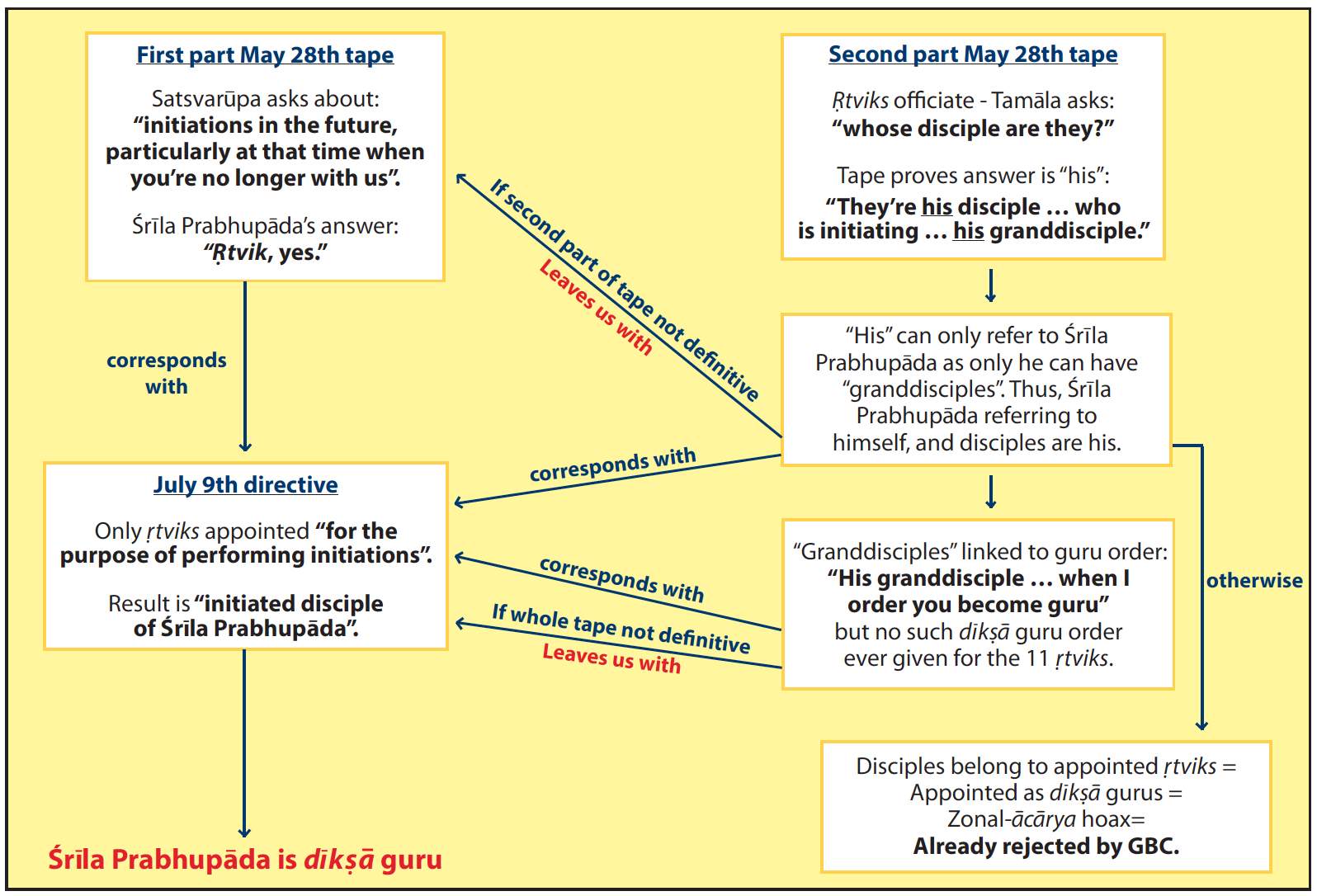
Back To Prabhupada, Issue 55, Spring 2017
 |
1) In recent issues we analysed the May 28th, 1977 conversation between Srila Prabhupada and the GBC in depth, even uploading a portion of the tape for our readers to hear – please see "Zonal Acarya Hoax Revival", BTP 52, and "Changing Srila Prabhupada's Words", BTP 53. We can now combine the findings presented in those articles with other information regarding the May 28th, 1977 conversation and Srila Prabhupada's July 9th, 1977 directive. The GBC focuses on the second part of the May 28th conversation because Srila Prabhupada mentions the words "granddisciple" and "regular guru", and thus they believe it supports their successor guru system (GBC resolution 409, 2004). The GBC agrees that the conversation refers specifically to what will happen after Srila Prabhupada physically departs – they have to in order to be able to use the conversation to support their guru system, which can only occur after Srila Prabhupada physically departs. Whereas the first part of the May 28th conversation and the July 9th directive are not of much help to them, since they mention "rtviks", or representatives, whose action will result in Srila Prabhupada becoming the diksa guru – and thus support those promoting Srila Prabhupada as being the diksa guru of ISKCON.
2) The diagram above, however, shows that all these different pieces of evidence can be synthesised to arrive at only one conclusion. The first part of the May 28th conversation speaks of Srila Prabhupada appointing rtviks for after his departure. The July 9th directive results in the appointment of these same rtviks – and thus corresponds with the first part of the May 28th conversation which speaks of these rtviks being appointed. The second part of the May 28th conversation answers the question of whose disciples the appointment of rtviks will result in. There can only be two answers – either Srila Prabhupada's or the rtviks' themselves. As shown, the disciples created by the rtviks can only belong to Srila Prabhupada – which is established via two different routes. This then leads to the second part of the May 28th conversation corresponding with the July 9th directive, which speaks of the same rtviks creating disciples for Srila Prabhupada – with no order either in the directive or subsequently for them to become diksa gurus. And we already noted that the first part of the May 28th conversation corresponds with the July 9th directive. Hence, both parts of the May 28th conversation correspond with the July 9th directive, and thus all these 3 pieces of evidence are consistent and reinforcing, resulting in the same conclusion – that Srila Prabhupada is the diksa guru of ISKCON, with rtviks having been appointed to accept disciples who would be Srila Prabhupada's initiated disciples.
3) The fact that all 3 pieces of evidence lead to the same result, means that eliminating pieces of evidence will not matter. Thus, if one argues that the second part of the May 28th conversation is not clear enough for one to be able to derive any definitive conclusion, then one is left with only the first part of the conversation. This corresponds with the July 9th directive, and hence leads to the conclusion that Srila Prabhupada is the diksa guru of ISKCON. Or, if one argues that the whole May 28th conversation is not clear enough to be able to derive any definitive conclusion, then one is left with the July 9th directive, which thus leads to the conclusion that Srila Prabhupada is the diksa guru of ISKCON. So from any and all angles, the conclusion is the same: Srila Prabhupada is the diksa guru of ISKCON.
Return to IRM Homepage